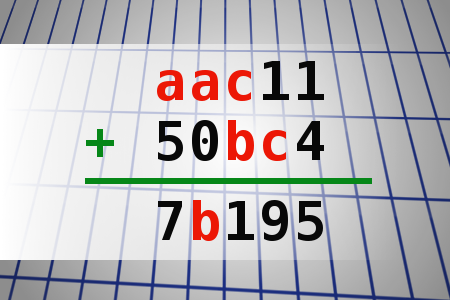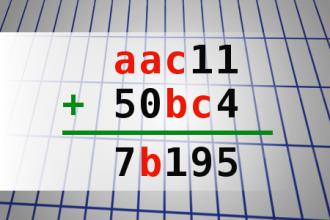Find number abc
If aac11 + 50bc4 = 7b195 find number abc. Multiple solutions may exist.Correct answers: 20
The first user who solved this task is Nílton Corrêa de Sousa.
#brainteasers #math

Jacob, age 92, and Rebecca, ag...
Jacob, age 92, and Rebecca, age 89, living in Florida, are all excited about their decision to get married. They go for a stroll to discuss the wedding, and on the way they pass a drugstore. Jacob suggests they go in.
Jacob addresses the man behind the counter: Are you the owner?
The pharmacist answers, Yes.
Jacob: Were about to get married. Do you sell heart medication?
Pharmacist: Of course we do.
Jacob: How about medicine for circulation?
Pharmacist: All kinds.
Jacob: Medicine for rheumatism and scoliosis?
Pharmacist: Definitely.
Jacob: How about Viagra?
Pharmacist: Of course.
Jacob: Medicine for memory problems, arthritis, jaundice?
Pharmacist: Yes, a large variety. The works.
Jacob: What about vitamins, sleeping pills, Geritol, antidotes for Parkinsons disease?
Pharmacist: Absolutely.
Jacob: You sell wheelchairs and walkers?
Pharmacist: All speeds and sizes.
Jacob: We would like to use this store as our Bridal Registry.
Jacob addresses the man behind the counter: Are you the owner?
The pharmacist answers, Yes.
Jacob: Were about to get married. Do you sell heart medication?
Pharmacist: Of course we do.
Jacob: How about medicine for circulation?
Pharmacist: All kinds.
Jacob: Medicine for rheumatism and scoliosis?
Pharmacist: Definitely.
Jacob: How about Viagra?
Pharmacist: Of course.
Jacob: Medicine for memory problems, arthritis, jaundice?
Pharmacist: Yes, a large variety. The works.
Jacob: What about vitamins, sleeping pills, Geritol, antidotes for Parkinsons disease?
Pharmacist: Absolutely.
Jacob: You sell wheelchairs and walkers?
Pharmacist: All speeds and sizes.
Jacob: We would like to use this store as our Bridal Registry.

